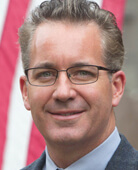
I rang the doorbell, and I heard distant footsteps inside the house. They were expecting me, so it didn’t take long for them to answer the door. Mickey’s oldest son greeted me. “Hi, Adam, come on in. Thanks for coming over on such short notice.” He led me to Mickey’s office, which has been converted to his hospice bedroom. The tail end of Mickey’s career coincided with the front end of mine. When he gave up his office in the city, he continued to manage his modest book of business from his home. While he enjoyed a semi-retired work-from-home life, we kept in touch every now and again. But when I entered Mickey’s office, I was stunned. The stout, rosy-cheeked, affable, Irish jokester lay in his hospice bed surrounded by machines and his family. I knew he was ill, but I was not prepared for his progressed state. I approached his bed, and he grabbed my hand. He said, “Did you bring the paperwork?”
“I’m sorry, Mickey. I am so sorry,” I replied, responding more to his condition than to his question. He had called me the day prior and told me he was ill. He told me he was sick and was ready to make the transition. I replied, “There are some details we need to complete, but I will make sure you get them.” After some brief pleasantries with his family, I left the room. As I was being shown the door by his wife, she grabbed my arm, and she said, “You better hurry.” And hurry I did. I raced back to my office, notified the general agent and our broker-dealer. I detailed what I could from an agreement I had used before.
Mickey signed it the next day. Then he passed away the following morning. It was a Sunday. Three weeks later, I was delivering the life insurance check to his sons. A week after that, I was meeting with his wife in their home, reviewing her IRAs and her needs for income. Since the house was being sold and cleared out, it was quite a mess. Mickey enjoyed hunting deer, and his taste in mounting the big game head on the family room wall wasn’t really suitable for a buyer’s market, so about a dozen or so of them were laid all over the family room floor. As I navigated my way around the mounts toward the kitchen, his wife asked me if I wanted one. I replied, “No, thank you.”
Throughout the morning, she would offer me other belongings of his: ties, filing cabinets, some office furniture, paper clips, pencils, nice Cross pens. I kept up my refrain: “No, thank you.” But as I was leaving, she thrust a brand-new Keurig coffee machine into my arms ― in my unwelcoming arms ― kind of like how a golfer tips a caddy. She said, “Here. Mickey bought this, and I don’t even drink coffee.” So, I drove away with his files in my trunk, his coffee machine in my back seat and the whiplash of a rapid and unexpected succession plan. A year later, his wife came to my office, and I offered her a cup of coffee from that Keurig machine. She gave me a wink and said, “No, thank you.”
I have found that most succession topics in and around our profession are focused on finding a successor. My Focus Session is different and will take a deep dive into the succession process, but it will be told from the vantage point of the advisor who has taken over the practice. In fact, I have taken over five of them. Here are a few things that I have learned:
- Don’t overlook a modest-sized practice, and focus on the potential revenue after the sale.
- Don’t be eager to take your predecessor out of the picture. Keep him or her in the picture. It is vital. It’s imperative for you to transfer that client relational equity from your predecessor to you. This is literally like adopting a member of their family. You need that adopting parent to transfer that trust and relational equity to you.
- Adopting a practice doesn’t mean it’s time for you to retire. It’s time for your predecessor to slow down and retire. It’s time for you to get to work because it’s a lot of work adopting someone else’s practice.
- How do you structure a buyout? Why is it that succession really is more of an adoption than an acquisition?

Adam A. Solano Jr., CRPC, is a 23-year MDRT member with 11 Court of the Table and two Top of the Table qualifications. An active member of MDRT and NAIFA since 1997, Solano has run for public office, spoken on Main Platform, been a 4 Under 40 recipient, defended the industry on live television and recently wrote a book. He lives in a suburb of Chicago, Illinois.